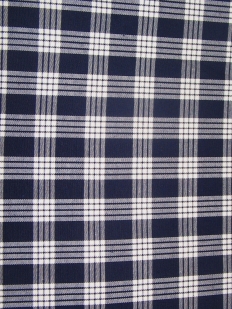Before there were aloha shirts, there was palaka.
The plaid-print cloth from England had been sewn into work shirts for plantation laborers, quickly becoming synonymous with this time in Hawaii’s history. Farmers, ranchers and plantation workers liked that the material was both comfy and durable, especially when working under the hot Hawaiian sun. Not to mention, it was fairly cheap, so they could sure get their money’s worth per yardage of fabric.
Eventually, the popularity of palaka spread beyond the fields and into the everyday attire of adults and children. Boys and girls wore palaka to school, while adults wore them to gatherings. It had even been considered a formal print, in which newlyweds rode off into the sunset donning their palaka as honeymoon attire.
But perhaps the most pivotal point for palaka was when it held the same value as aloha shirts do today for tourists. Tourists loved palaka so much that they usually left the islands with one on. It became a major market for local seamsters, like Goro Arakawa. His family made a living repairing and custom-fitting palaka clothing for people around the islands. Goro carried on the tradition and sold thousands of palaka prints in bright, vibrant colors.
Although palaka has played an important role in Hawaii’s history, it is not often worn nowadays. That’s because the aloha shirt took over, getting even more popular when they made cameos on the Hollywood big screen. Hawaii-based movies like “Blue Hawaii” and “From Here to Eternity” encouraged people to “go Hawaiian;” hence, palaka slowly disappeared into the depths of people’s closets.
Today, you’ll see palaka prints for sale at swap meets or as the attire for musicians and paniolos. The print is no longer limited to clothing but other items as well. I remember my mom having a big blue palaka-print bag, which she always used for our family beach outings. It seemed as if she stuffed our entire house in that thing – from our extra change of clothes to sunscreen and beach toys; that palaka bag is no doubt nostalgic of my childhood and an important reminder of our island history.
Source: www.hawaiipalaka.wordpress.com




